Building a DIY dog crate can be a fun and rewarding project that allows you to create a safe space for your pup while showcasing your personal style. With just a few materials and some creativity, you can design a cozy retreat that fits perfectly in your home. Whether you’re looking to save money or want a custom design, this guide will help you get started on making a crate that both you and your furry companion will love.
Adding Functional Features like Doors and Latches
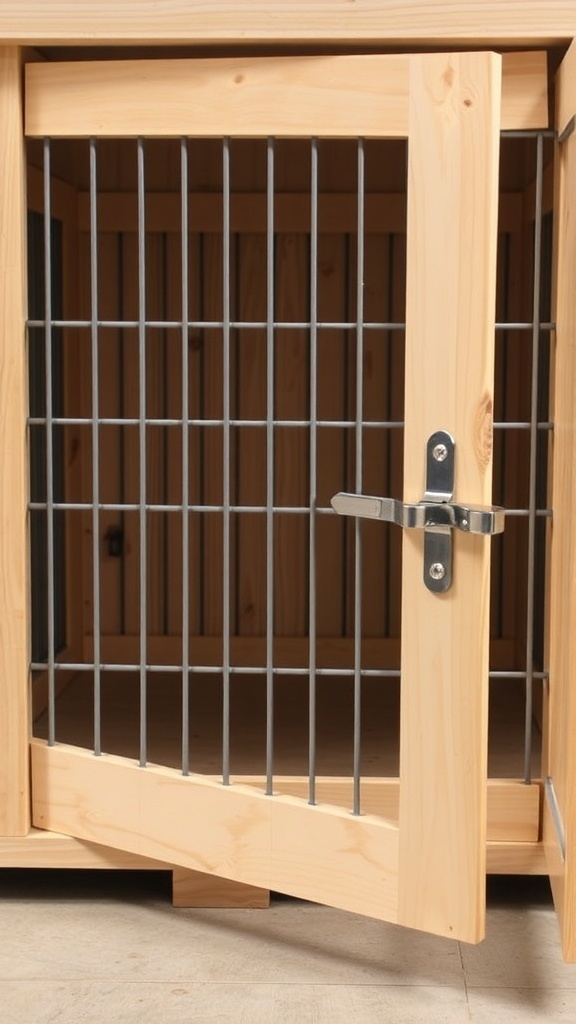
When building a DIY dog crate, adding functional features like doors and latches is key. The image shows a well-crafted crate with a wooden door and metal bars. This design not only looks great but also provides security for your pet.
The door should be easy to operate. A simple latch mechanism can make it convenient for you to open and close. In the image, you can see a sturdy latch that keeps the door secure while allowing easy access. This is important for both you and your dog.
Consider the size of the door as well. It should be large enough for your dog to enter and exit comfortably. A well-sized door helps your pet feel more at ease in their space. With the right features, your DIY crate can be both functional and stylish.
Choosing the Right Materials for Your DIY Dog Crate
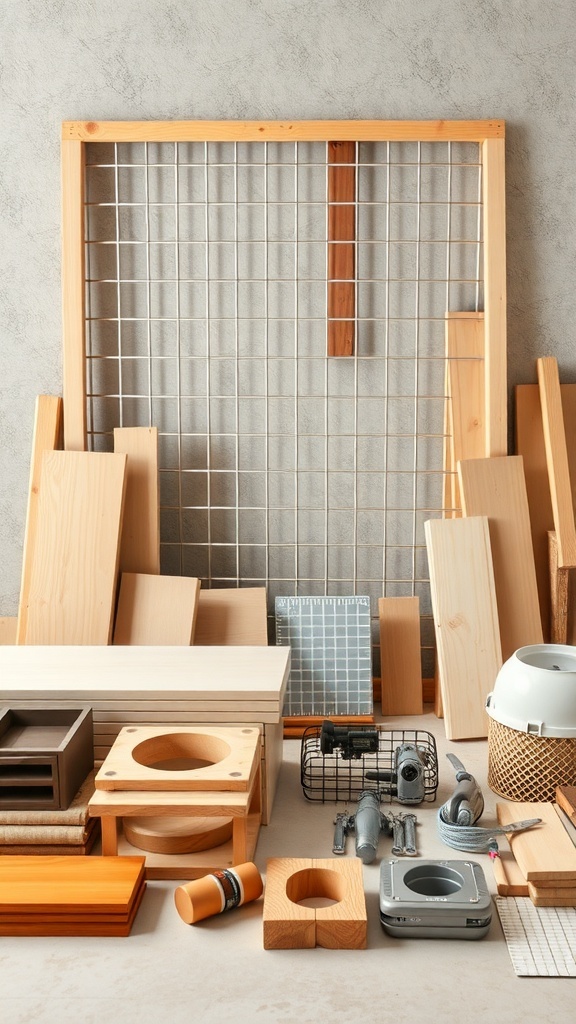
When building a DIY dog crate, picking the right materials is key. The image shows a variety of wood pieces and tools that can help you create a sturdy and safe space for your pup. You’ll want to choose materials that are durable and easy to work with.
Start with quality wood, like pine or plywood. These options are strong yet lightweight, making them ideal for a crate. The grid panel in the image can serve as a great ventilation feature, ensuring your dog stays comfortable.
Don’t forget about safety! Avoid using treated wood, as it can contain harmful chemicals. Instead, look for untreated or natural wood. This keeps your furry friend safe while they relax in their new space.
Lastly, gather some essential tools shown in the image. A saw, screws, and a drill will be your best friends in this project. With the right materials and tools, you’ll be on your way to crafting a cozy crate for your dog.
Measuring Your Dog for the Perfect Fit
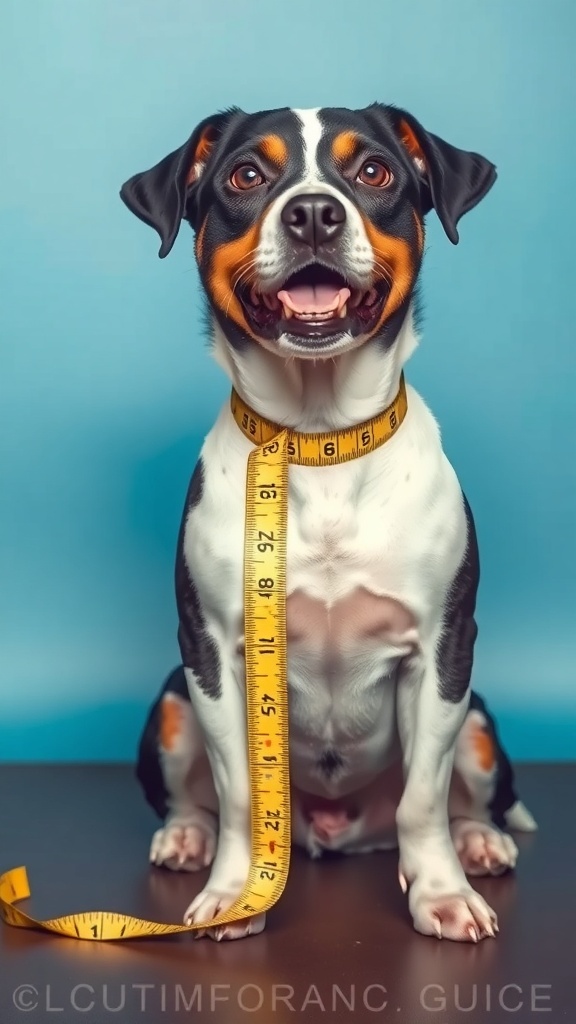
Getting the right size crate for your dog is super important. You want them to feel cozy and secure, not cramped or too spacious. The image shows a friendly dog sitting next to a measuring tape and a grid, making it clear how to measure your pup properly.
First, measure your dog from the tip of their nose to the base of their tail. This gives you the length. Next, measure from the ground to the top of their head when they’re standing. This helps you find the right height. Make sure to add a few inches to both measurements for comfort!
Using these measurements, you can choose a crate that fits just right. A snug fit will help your dog feel safe, while a little extra space allows them to stretch out. Remember, a happy dog is a comfortable dog!
Creating a Foldable or Collapsible Design
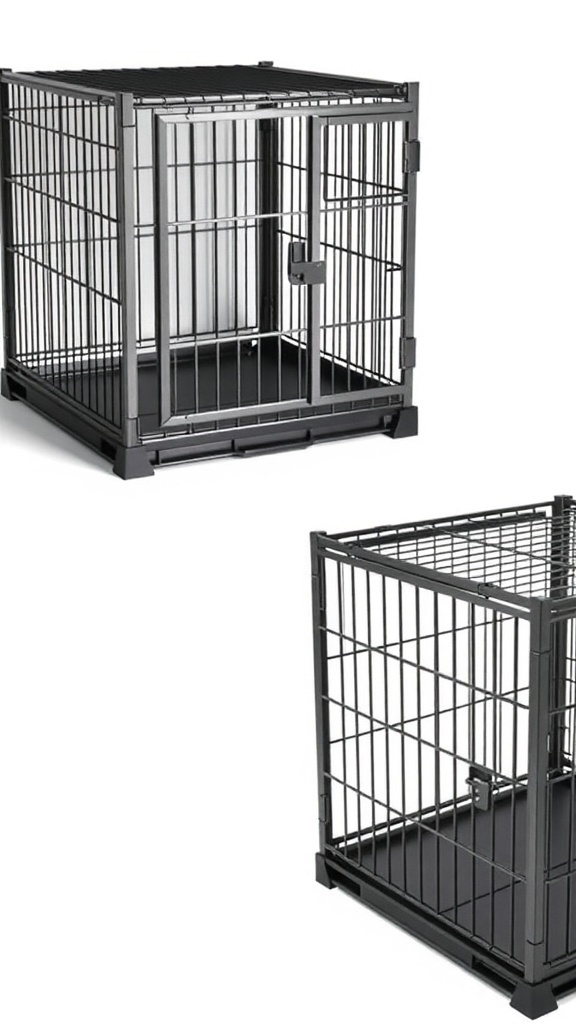
When it comes to DIY dog crates, a foldable or collapsible design can be a game changer. This type of crate is perfect for those who need flexibility in their space. You can easily set it up when needed and fold it away when it’s not in use.
The image shows a sturdy, collapsible dog crate. It has a simple yet effective design, featuring a metal frame and a secure latch. This makes it both safe for your pet and easy for you to manage. The collapsible feature allows for quick storage, making it ideal for small living spaces.
To create your own foldable dog crate, start by selecting durable materials. Metal frames work well for strength and stability. You’ll also want to ensure the crate has a secure locking mechanism to keep your dog safe inside.
Once you have your materials, measure and cut the pieces to size. Assemble the frame, making sure it can easily fold down. Adding a removable bottom tray can help with cleaning and maintenance. Finally, consider adding a soft bed or mat inside for comfort.
Incorporating a Stylish Exterior Finish
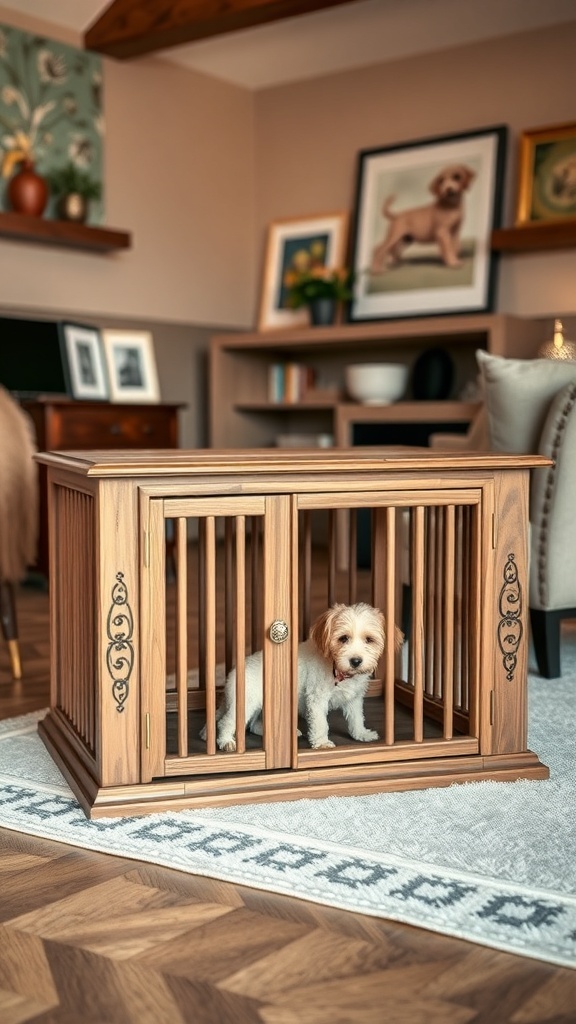
When it comes to DIY dog crates, the exterior finish can make a big difference. A well-finished crate not only serves its purpose but also adds to your home decor. In the image, you can see a beautifully crafted wooden crate that blends seamlessly with the surrounding furniture.
The natural wood grain gives it a warm and inviting look. This style is perfect for those who want their pet’s space to feel like a part of the home. The decorative elements, like the intricate carvings, add a touch of elegance that elevates the overall aesthetic.
Choosing the right finish is essential. You might opt for a stain that enhances the wood’s natural beauty or a paint that matches your room’s color scheme. Either way, a stylish exterior finish can turn a simple dog crate into a chic piece of furniture.
Don’t forget to consider durability. A good finish will protect the wood from scratches and spills, ensuring that your crate looks great for years to come. With a little creativity, you can create a cozy space for your pup that you’ll be proud to showcase.
Creating Ventilation and Visibility in the Crate
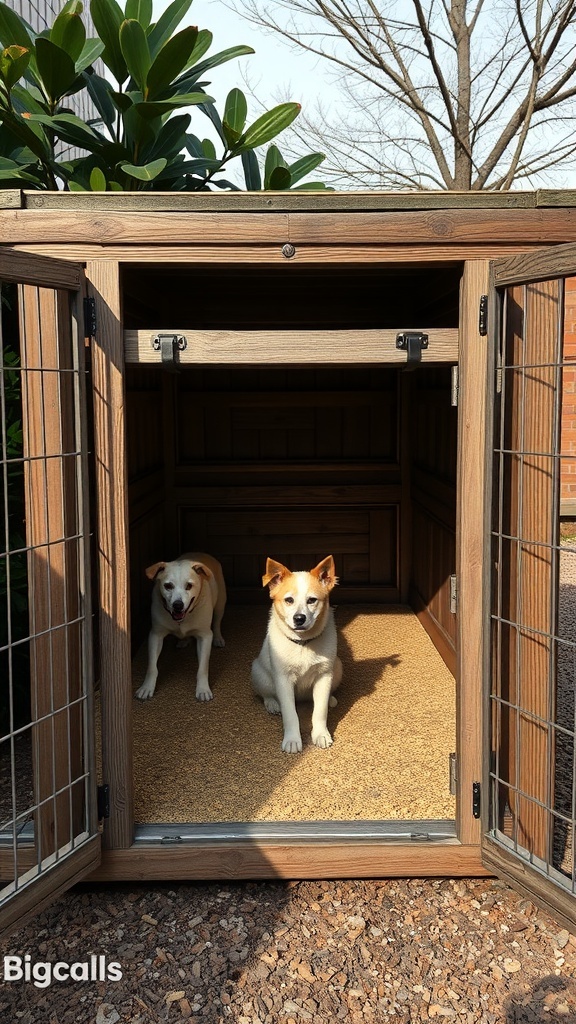
When building a DIY dog crate, ensuring good ventilation and visibility is key for your pup’s comfort. The image shows two dogs relaxing inside a well-designed crate. The open front with wire mesh allows for airflow, which helps keep the space cool and fresh.
Visibility is just as important. Dogs love to see what’s happening around them. This crate’s design, with its open sides, lets your furry friends feel included in family activities. They can watch the world go by while enjoying their cozy space.
Using materials like wood and wire mesh not only provides durability but also creates a welcoming environment. Make sure the crate has enough space for your dogs to move around comfortably. A happy dog is a healthy dog!
Ensuring Safety with Non-Toxic Materials
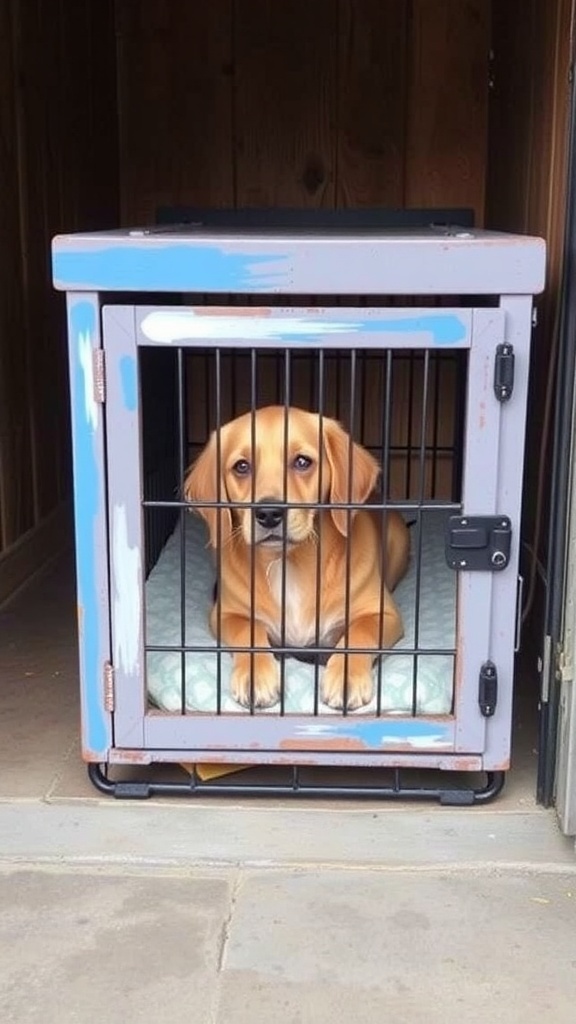
When creating a DIY dog crate, safety should be your top priority. The image shows a cozy crate with a sweet dog inside, highlighting the importance of a safe space for your pet. Using non-toxic materials is essential to keep your furry friend healthy.
Start by choosing wood that is untreated and free from harmful chemicals. Many paints and finishes contain toxins that can be harmful if ingested or inhaled. Opt for water-based paints or stains that are labeled as non-toxic. This ensures that your dog is safe while enjoying their new crate.
Also, consider the bedding inside the crate. Look for materials that are hypoallergenic and free from harmful dyes. Soft, natural fabrics like cotton or linen can provide comfort without the risk of irritation. Keeping your dog safe and comfortable is the goal!
Designing a Comfortable Interior Space
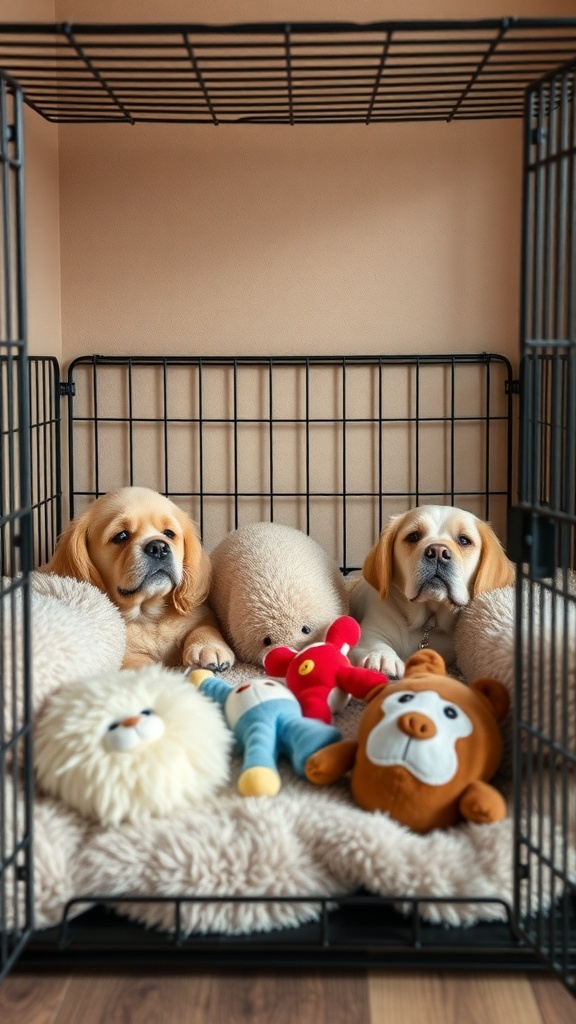
Creating a cozy space for your dog in a DIY crate can make a big difference in their comfort and happiness. The image shows two dogs relaxing in a well-furnished crate, surrounded by soft toys and a plush bed. This setup not only looks inviting but also provides a safe haven for your pets.
Start with a soft bedding material. A fluffy blanket or a dog bed can make the crate feel warm and inviting. The dogs in the image seem to enjoy their plush surroundings, which is essential for a good rest.
Adding toys is another great way to enhance the crate experience. The colorful toys in the image offer entertainment and comfort. Choose toys that are safe and suitable for your dog’s size and chewing habits.
Lastly, consider the crate’s location. Placing it in a quiet area of your home can help your dog feel secure. A well-placed crate can become their favorite spot to relax and unwind.
Finishing Touches: Adding a Roof or Canopy
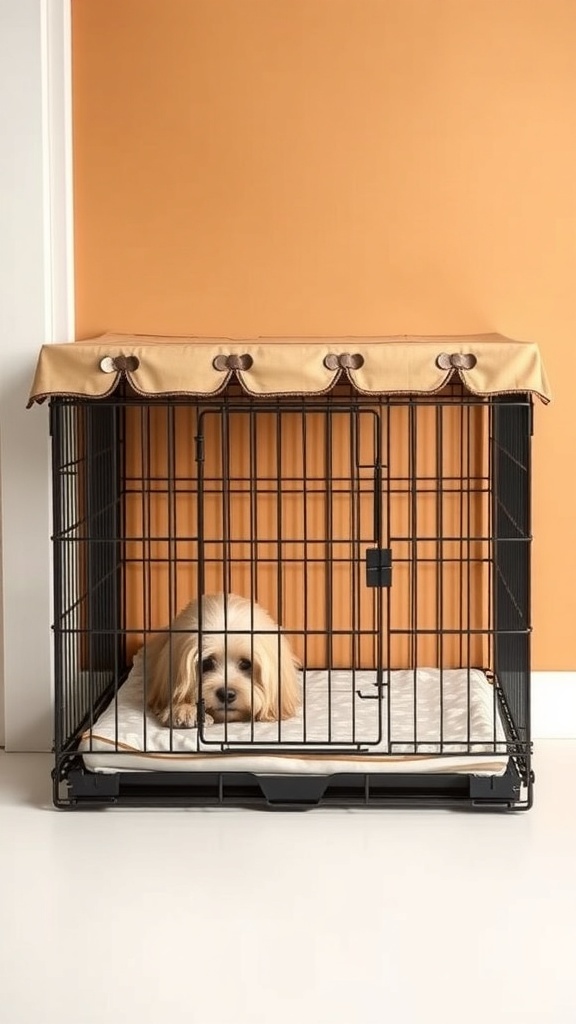
Adding a roof or canopy to your DIY dog crate can really enhance its look and functionality. In the image, you can see a stylish crate with a lovely fabric canopy. This not only gives your pup some shade but also adds a cozy touch to the space.
When choosing a fabric for the roof, consider something that complements your home decor. A neutral color, like the beige shown here, can blend nicely with various styles. Plus, it’s easy to clean!
Make sure the canopy is securely attached. You want it to withstand any playful antics from your dog. Use sturdy clips or Velcro to keep it in place. This way, your furry friend can enjoy their crate without any worries.
Finally, don’t forget to personalize the crate with some fun decorations or your dog’s name. This makes it feel like a special retreat just for them!
Incorporating a Removable Bottom for Easy Cleaning

When designing a DIY dog crate, one of the best features you can add is a removable bottom. This makes cleaning a breeze, especially if your pup has an accident or sheds a lot. In the image, you can see a dog sitting comfortably on a removable plastic bottom. This design not only keeps the crate tidy but also provides a smooth surface for your pet.
The removable bottom can be easily taken out and cleaned, ensuring that your dog has a fresh and hygienic space. You can use a simple latch or sliding mechanism to secure it in place. This way, you can quickly remove it without any hassle. Plus, it saves you from having to scrub the entire crate every time.
Using materials that are easy to wipe down, like plastic or metal, can make maintenance even simpler. Just a quick rinse or wipe with a pet-safe cleaner will do the trick. This feature is especially handy for busy pet owners who want to keep their dog’s space clean without spending too much time on it.
Incorporating Storage Solutions for Dog Supplies
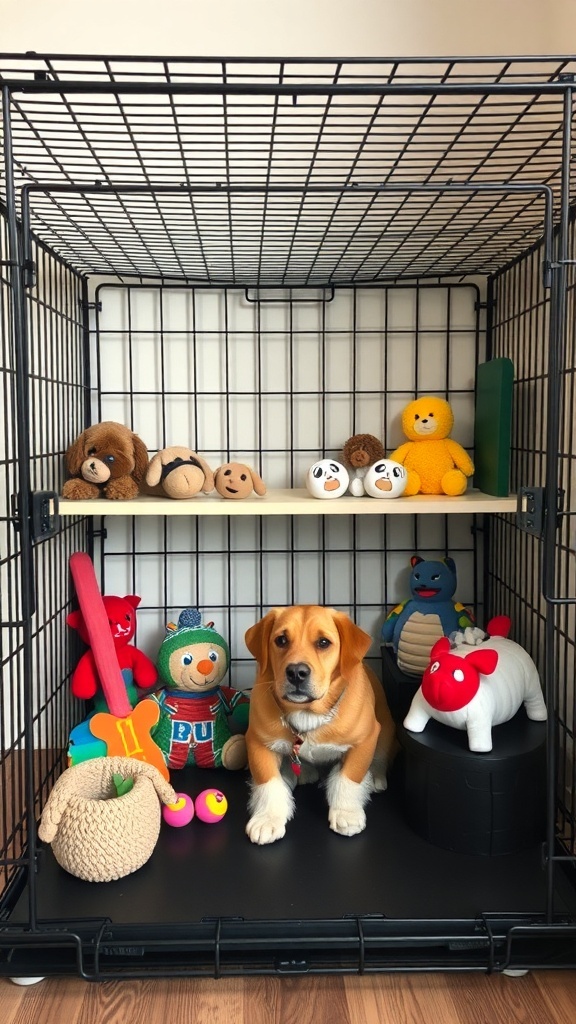
Creating a cozy space for your dog can be both functional and stylish. The image shows a well-organized dog crate that doubles as a storage solution for toys and supplies. This setup not only keeps your dog’s belongings tidy but also provides a designated area for them to relax.
In the crate, you can see a variety of colorful toys neatly arranged. This makes it easy for your dog to find their favorites while keeping the space clutter-free. A clean and organized crate can help your dog feel more comfortable and secure.
Using a crate like this can also encourage good habits. By having a specific spot for toys, your dog can learn where to put them away after playtime. Plus, it makes cleaning up a breeze for you!
Consider adding shelves or bins to your crate for extra storage. This way, you can keep treats, leashes, and grooming supplies all in one place. A well-organized crate can be a game changer for both you and your pup.
Building a Crate with Multi-Functional Uses
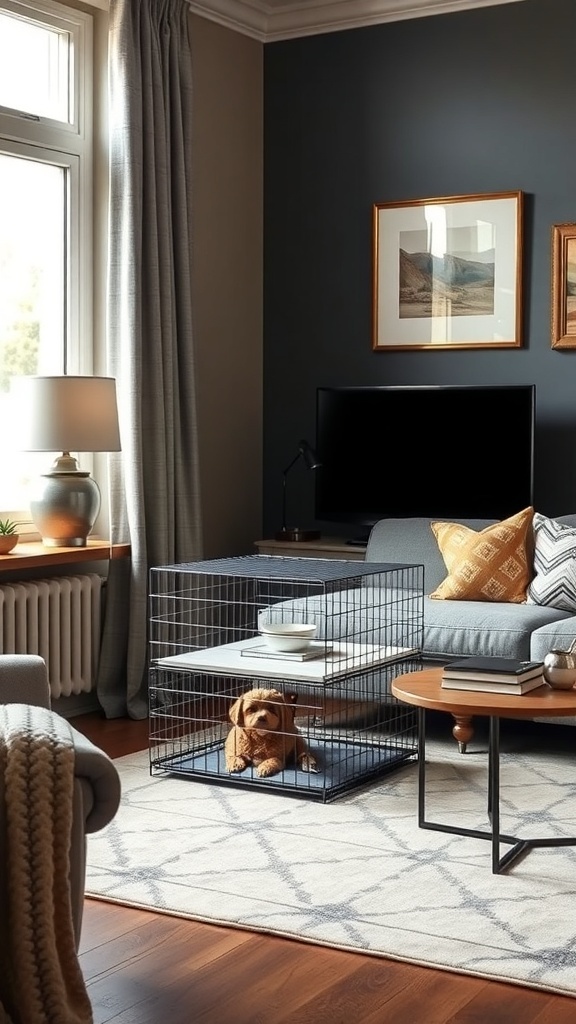
Creating a dog crate that serves multiple purposes can be a fun project. The image shows a stylish crate that fits nicely into a living room setting. It’s not just a place for your dog to relax; it can also double as a side table or a decorative piece.
The design features a sleek metal frame with a cozy bed inside, making it inviting for your pet. The top surface can hold items like a lamp or books, blending seamlessly with your home decor. This way, the crate doesn’t feel out of place in your living room.
When building your own crate, consider the size and style that will work best in your space. You want it to be functional but also visually appealing. Using materials that match your furniture can help it feel like part of the room.
Don’t forget to add a comfortable bedding option inside. This will make it a cozy retreat for your dog. You can also personalize the crate with your dog’s name or some fun decorations. This adds a special touch and makes it feel like their own little space.
Personalizing Your Dog Crate with Custom Decor
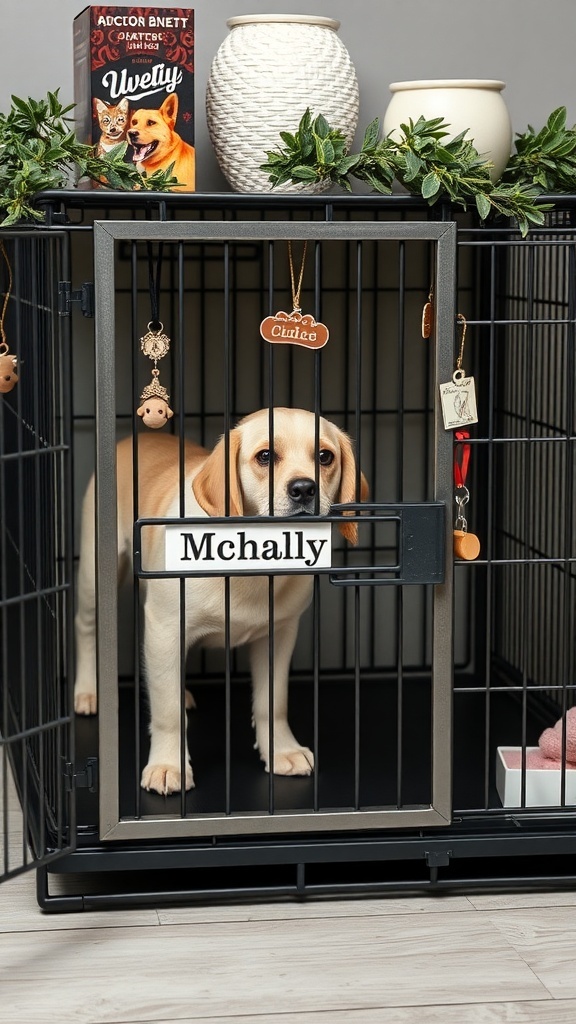
Making your dog’s crate feel like home is a fun project. The image shows a cozy crate with a cute dog peeking out. It’s not just a space for your pup; it can be a stylish part of your home.
Start by adding a personalized nameplate, like the one that says ‘Mchally’ in the picture. This small touch makes the crate feel special and unique to your dog.
Decorate the crate with some greenery or small hanging decorations. The vines and charms in the image add a nice touch, making the crate look inviting. You can use faux plants that are easy to maintain.
Don’t forget about comfort! A soft blanket or a plush bed inside the crate can make it a cozy retreat. The pink items in the crate show how a little color can brighten up the space.
Finally, consider placing a few toys or treats nearby. This not only makes the crate more appealing but also encourages your dog to see it as a safe space. Personalizing your dog crate can turn it into a lovely nook for your furry friend!
Choosing the Right Size for Your Dog’s Breed
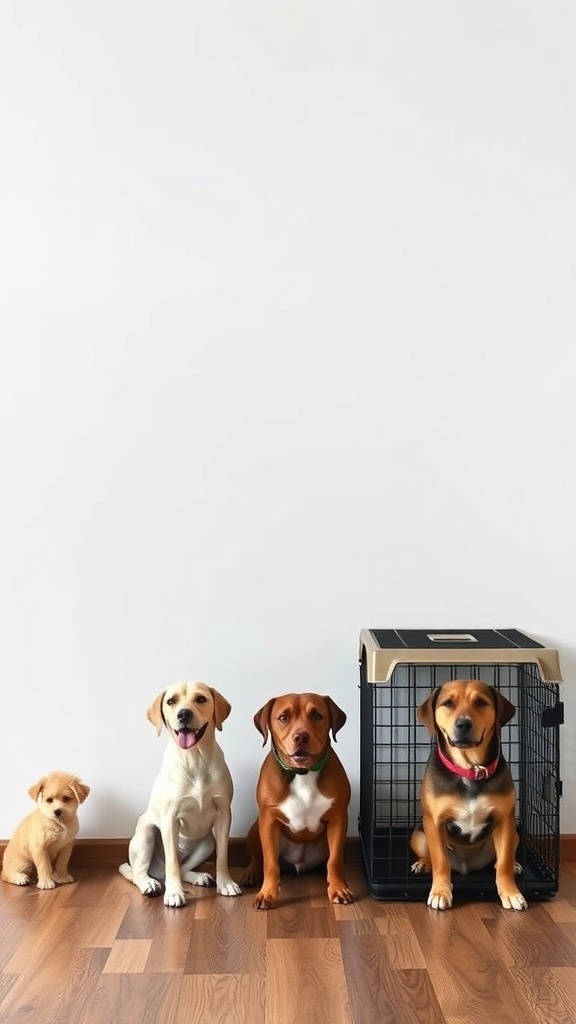
When picking a crate for your dog, size matters. The image shows a variety of dogs, from a tiny puppy to larger breeds, all lined up. This visual highlights the need to choose a crate that fits your dog’s size and breed.
A crate should be cozy but not cramped. Your dog should be able to stand, turn around, and lie down comfortably. For smaller breeds, a compact crate works well. Larger breeds need more space, so a bigger crate is essential.
Measure your dog from nose to tail and from the ground to the top of their head when standing. This will help you find the right dimensions. Keep in mind that puppies will grow, so consider a crate that can adjust as they get bigger.
In the image, you can see how different sizes of dogs require different crate sizes. This serves as a great reminder to choose wisely based on your dog’s breed and size.
Adding Wheels for Mobility and Convenience
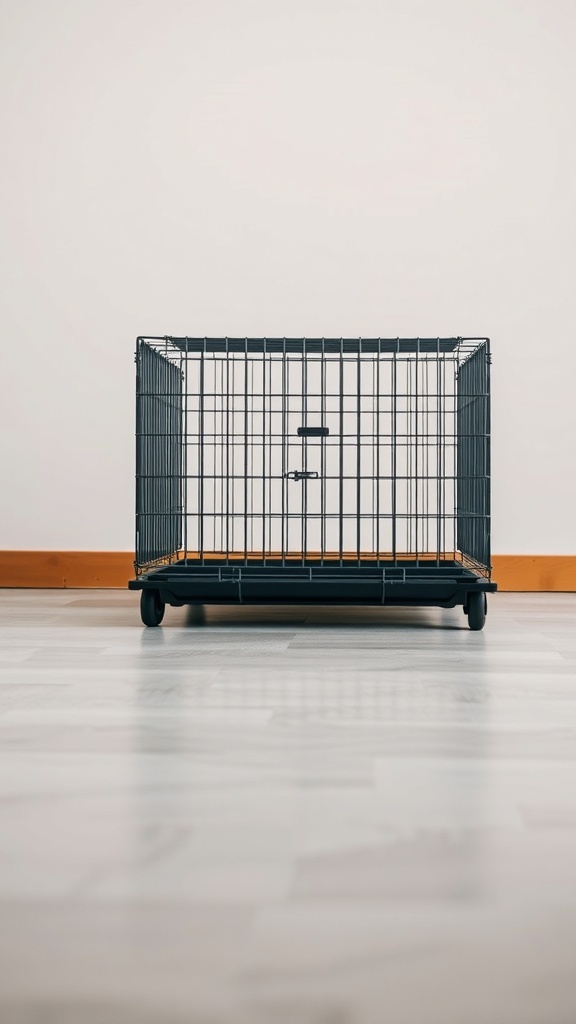
Making a DIY dog crate is a fun project that can really enhance your pet’s comfort. One great addition is wheels. Adding wheels to your crate makes it easy to move around your home. This is especially handy if you need to shift the crate from room to room.
The image shows a sturdy crate with wheels attached to the bottom. These wheels are designed to roll smoothly on various surfaces, making it simple to relocate the crate without lifting it. This can be a lifesaver when you want to clean or rearrange your space.
When choosing wheels, look for ones that lock in place. This will keep the crate stable when your dog is inside. It’s a small detail that adds a lot of convenience. Plus, it allows your dog to feel secure while still being part of the family activities.